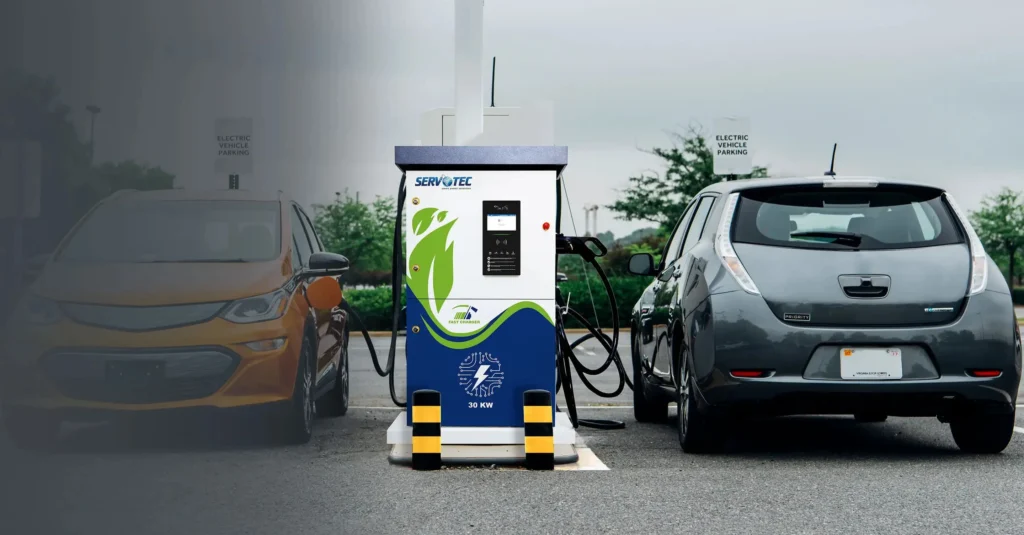The world is shifting gears, accelerating into an era where electric vehicles (EVs) are not just a novelty but a necessity. Amidst this transformation, a critical component emerges as a focal point of discussion and development: electric vehicle charging. Specifically, the role of Direct Current (DC) charging solutions is becoming increasingly significant. This article looks at the future of EV charging, examining the technological, business, and educational perspectives that drive this exciting field.
The Evolution of EV Charging Technology
The journey of electric vehicle charging technology has been one of constant innovation and adaptation. From the early days of slow, alternating current (AC) chargers, the industry is witnessing a significant pivot towards faster, more efficient DC charging solutions. This shift is not just about speed; it reflects a deeper understanding of the needs of EV users and the demands of a rapidly evolving market.
DC charging presents a solution that aligns with the fast-paced lifestyle of modern society. Unlike AC chargers, which typically take hours to fully charge a vehicle, DC chargers can do the job in a fraction of the time. This efficiency is crucial in making EVs more practical and appealing to a broader audience, ensuring that the transition from fossil fuels to electric power is not just eco-friendly but also convenient.
The Business of Charging
The burgeoning field of EV charging is not just a technological marvel; it’s a significant business opportunity. This growing need for charging infrastructure opens up new avenues for investment, innovation, and revenue. However, this rapid growth also brings forth unique challenges.
One of the primary challenges is the need for substantial investment in infrastructure. Building a network of DC charging stations is capital intensive, requiring not just the installation of charging units but also upgrades to the existing electrical grid to handle the increased load.
Despite these challenges, the business potential of DC charging solutions is immense. Companies continue to create innovative business models, such as subscription services, pay-per-use, or even free charging stations subsidized by advertising. There’s also a growing trend of partnerships between charging infrastructure companies and businesses like shopping centers, hotels, and workplaces, providing mutual benefits. Additionally, the importance of UX/UI trends in shaping the future of EV charging must be considered. As the interface between the user and the technology, a well-designed user experience and user interface are vital. They not only make charging stations more accessible and easier to use but also enhance the overall satisfaction of the user, which is essential in promoting the adoption of electric vehicles.
Educational Initiatives and Workforce Development
As the EV charging industry grows, so does the need for a skilled workforce capable of designing, installing, and maintaining these advanced systems. This situation presents an exciting opportunity for educational institutions to develop specialized programs that cater to this emerging field.
Programs focusing on electrical engineering, renewable energy, and even specialized courses in EV technology are becoming more prevalent. These educational initiatives are not just about imparting technical knowledge; they also aim to foster more understanding of the environmental and societal impacts of electric vehicles and sustainable energy.
The importance of continuous learning and professional development in this field cannot be overstated. As technologies evolve, so must the skills of those who work with them. Online courses, workshops, and seminars are becoming increasingly important, allowing professionals to stay abreast of the latest developments in DC charging technology and best practices.
DC Charging Stations are at the Heart of the Revolution
DC charging stations are more than just a component of the electric vehicle ecosystem; they are the heart of the revolution transforming our approach to transportation. The prominence of DC charging stations lies in their ability to deliver high-power charging in a relatively short time. This capability is a game-changer, especially for long-distance travelers and commercial vehicles, where time is a critical factor. The rapid charging times not only enhance convenience but also significantly reduce range anxiety, a major concern for potential EV adopters.
Innovations in DC charging technology are moving at a brisk pace. We’re seeing developments in ultra-fast charging systems that promise to slash charging times further, making them comparable to the time spent refueling a traditional gasoline vehicle. This advancement is not just a technical achievement; it’s a psychological one, breaking down one of the biggest barriers to EV adoption.
But it’s not just about speed. The integration of renewable energy sources, like solar and wind, into DC charging stations is a leap towards a truly sustainable transportation system. This synergy of renewable energy and electric vehicles is a powerful narrative in our fight against climate change, signaling a future where our mobility solutions are in harmony with the environment.






